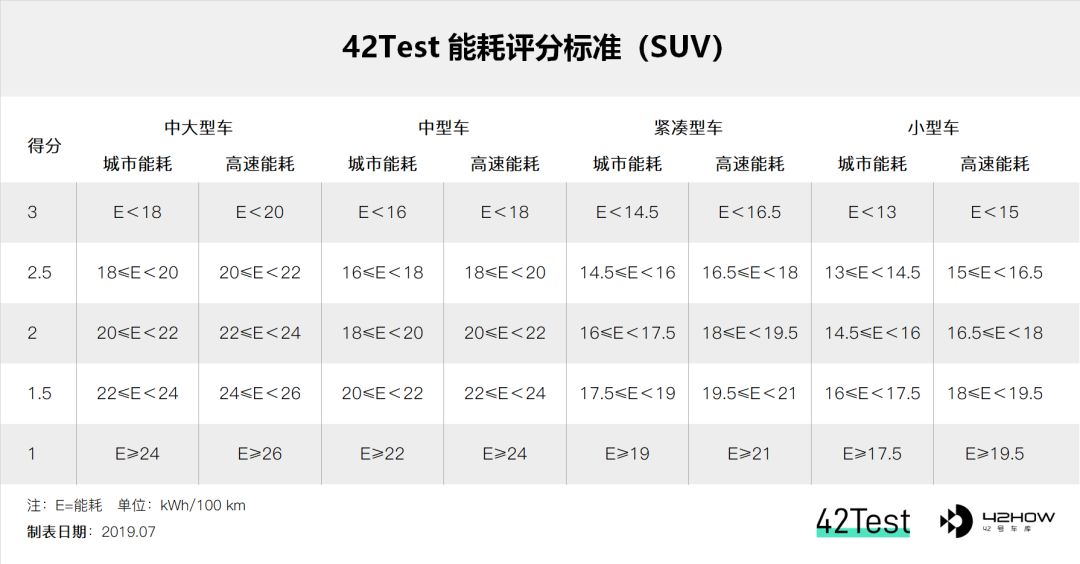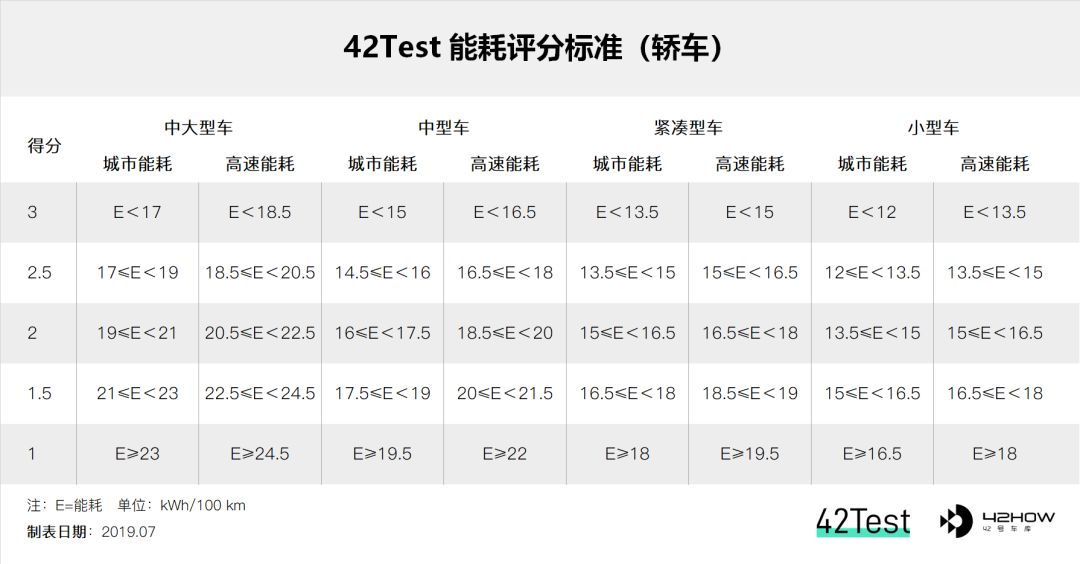42Test Range Testing Standard
42 Garage hopes to provide valuable reference range testing results for consumers planning to purchase new energy vehicles. Based on the actual usage of many car owners and our understanding of new energy vehicles, we have developed the 42Test Range Testing Standard.
This standard has been officially implemented, and every test car at 42 Garage will use this testing standard to conduct range testing, when time allows.
If you have any questions or suggestions about our testing process, please feel free to contact us via private message.
- Vehicle Settings Before Testing
For both high-speed and city range testing, we will have the following standard vehicle settings; if there are special circumstances during testing, we will make annotations and explanations in the article.
-
Battery charged to 100% before starting the test
-
Driving Mode: Standard (downward compatible)
-
Regenerative Braking: Strong
-
Tire Pressure: Standard tire pressure value recommended by the manufacturer (different manufacturers may have different standards)
-
Air Conditioning Settings: 22°C, 2nd Gear
-
High-speed Range Testing
The high-speed range testing will have a fixed route. Every car will be charged to a full battery at G60 Fengjing service area before departure, and drive south along G60 freeway (there will be an inter-provincial toll station along the way). The testing will stop when the displayed battery level is lower than 30 km. The actual range will be calculated based on the percentage of battery used during the test.
The Adaptive Cruise Control (ACC) will be used for the entire journey (if there is no ACC, then a fixed Cruise Control will be used). Cars will drive at the speed limit of 120 km/h as far as possible, while driving normally, overtaking slowly, and letting fast cars pass, to achieve an average speed as close to 120 km/h as possible.
If the vehicle’s high-speed range is more than 300 km, we will get off the freeway at Jinhua West Interchange, get back on the freeway, and drive north.
- City Range Testing
The City Range Testing also has a fixed route. Every car will be charged to a full battery at Shanghai National Convention and Exhibition Center, and will depart at 8 o’clock in the morning. The route will take the outer ring viaduct of Shanghai Qingpu interchange, drive clockwise for one circle, and return to Shanghai Qingpu interchange. The total distance is about 105 km.
After leaving the viaduct at Shanghai Qingpu interchange, turn onto the ground road of Yan’an Road, pass through Yan’an East Road Tunnel, Century Avenue, turn onto Yanggao South Road, and pass through Gaoke West Road, Tibet South Road, Huaihai Middle Road, Huashan Road, Guangyuan Road, Yishan Road, Caoxi Road and the outer ring viaduct. Return to the starting point of Shanghai National Convention and Exhibition Center, covering about 58km in total. The actual range will be calculated based on the percentage of battery used during the test.
During the test, we will record the displayed range every 10 km, and use the “Walker” app to record the driving mileage, driving trajectory, speed changes, dynamic average speed, and overall average speed.
- Charging Speed TestEach time we test charging speed, we set the vehicle’s SOC display to 0% and test the charging time and changes in charging power at a Tesla Supercharger station or a third-party charging station with a power range of 30-150 kW.
For each vehicle model, we conduct the test at the same charging station and the same stall. If the vehicle has a proprietary fast charging station, we will test the charging speed at the brand’s own charging station.
- Test Results:
Range and charging speed account for 25% of the overall rating in 42Test, i.e. 25 points, of which high-speed and city range account for 7 points each, high-speed and city energy consumption account for 3 points each, a total of 20 points, and charging speed accounts for 5 points. The grading criteria are as follows.



How is the proportion of city driving determined?
We want to simulate the daily conditions of vehicle owners as much as possible, so we set the departure time at 8:00 a.m., right in the middle of morning rush hour. Most users’ daily commutes involve more ring roads than city roads, so we set the ratio of ring roads to ground roads to about 2:1, and we will provide three test results of “overall city range,” “ring road range,” and “city range” for reference in the final test report.
Why choose this test route?
Congestion on the outer ring during morning rush hour in Shanghai is similar to that of the inner city, and there are no restrictions on license plates, so all test vehicles can drive on this route. For city roads, we chose several of the most feared roads in Shanghai during morning rush hour, which are also the most congested.
Why don’t we drive the battery to empty?
We believe that it is too dangerous to drive a vehicle to a complete standstill on a highway, and lowering the battery level below 30 km strikes a balance between safety and data value. Furthermore, our testing standards are currently the most stringent, and the data extrapolated from them are sufficient to demonstrate the vehicle’s actual high-speed range capability.The average speed of city range test is roughly 30 km/h. If the test vehicle has a city range of over 300 km, it means it will take more than 10 hours to complete the test. Therefore, we have chosen to run approximately 160 km for the test, and calculate the city range based on this distance for reference purposes.



This article is a translation by ChatGPT of a Chinese report from 42HOW. If you have any questions about it, please email bd@42how.com.